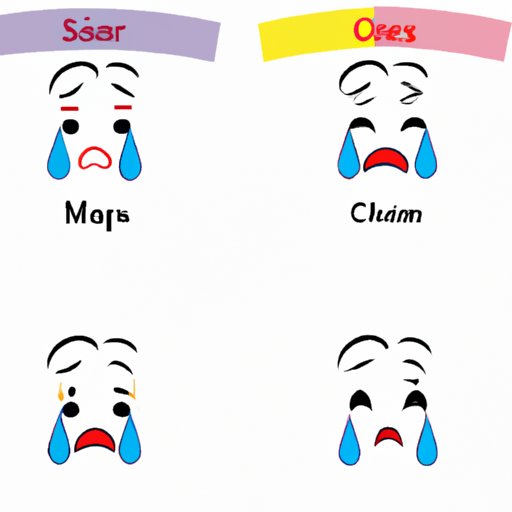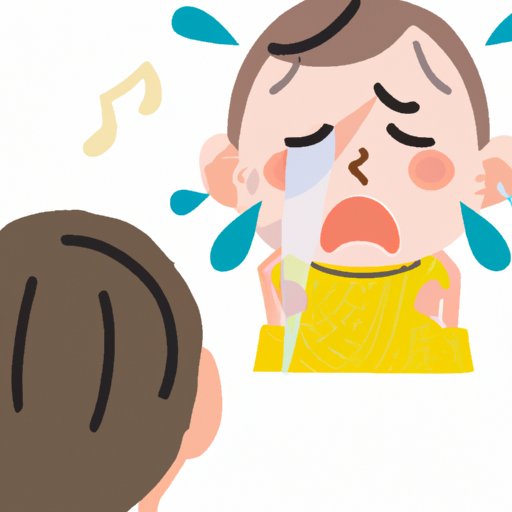Introduction
Crying is the body’s natural response to strong emotion, such as sadness, grief, or pain. It is an expression of intense feeling that often brings relief, even though it may also cause distress. Writing about crying can be tricky; it requires a delicate touch and a keen eye for detail. This article will explore how to effectively describe crying in writing, from the physical effects to the emotional aspects and sound of sobbing.
Describe the Physical Effects of Crying
When someone cries, there are several physical effects to consider. The most obvious is tears streaming down the face, but other details can be used to bring the scene to life. For example, you could describe the quivering chin, the way the breath hitches in the chest, or the trembling hands that try to wipe away the tears.

Use Metaphors and Similes to Compare Crying
Metaphors and similes can be effective in describing the magnitude of someone’s emotion. You could compare the tears to a floodgate breaking, or the sound of sobbing to a hurricane blowing through. These vivid comparisons can help readers understand the intensity of the emotion being felt.

Focus on the Emotional Aspects of Crying
The physical effects of crying are important, but the emotional aspects should not be overlooked. When someone is crying, they may feel a sense of desperation, sorrow, or hopelessness. These feelings should be conveyed in the writing, so readers can understand the full scope of the emotion being expressed.

Draw Attention to the Sound of Sobbing
The sound of sobbing can be powerful and evocative. It can be loud and ragged, or quiet and restrained. Paying attention to the sound can help readers gain insight into the character’s emotional state.
Convey the Aftermath of Crying
Once the crying has stopped, there are still physical effects to consider. These might include red-rimmed eyes, a throbbing head, or an exhausted feeling. Describing these details can help readers understand the aftermath of a powerful emotional moment.
Conclusion
Writing about crying can be tricky, but with careful consideration of the physical effects, emotional aspects, and sound of sobbing, it can be done effectively. Remember to pay attention to the details, use metaphors and similes to compare the emotion, and focus on the aftermath of crying. With these tips in mind, you’ll be able to accurately and sensitively describe crying in writing.
(Note: Is this article not meeting your expectations? Do you have knowledge or insights to share? Unlock new opportunities and expand your reach by joining our authors team. Click Registration to join us and share your expertise with our readers.)
